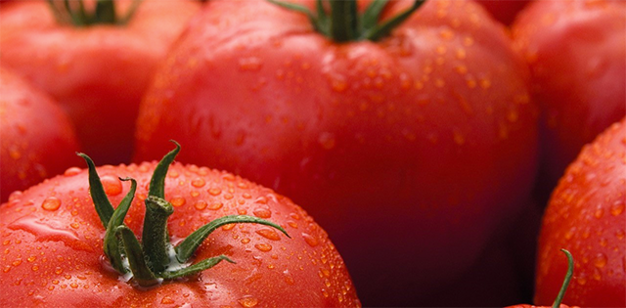Syngenta Vegetable Seeds announced this week the launch of its first commercial Tomato brown rugose fruit virus (ToBRFV) resistant variety, available in early 2021. The new variety will be released in areas where growers face severe disease pressure from the virus and will support against crop losses.

“The Syngenta Vegetables R&D team is ahead of the curve with the launch of the first commercial ToBRFV resistant variety,” explains Ruud Kaagman, Global Crop Unit Head for tomatoes. He reveals that the first resistant variety is a beef tomato for the Mediterranean market and the Middle Eastern climates. "The virus appeared first in these regions and therefore these areas have been in focus for a longer period. Following this launch, we will aim to introduce varieties with resistance to ToBRFV across our breeding programs and across the globe. Broad resistance will be built in the portfolio during the next several years.”
Ruud explains how the Syngenta R&D team led by Pilar Checa, Global Breeding Lead for tomato, looked for resistant genes in their own breeding program and in wild tomato accessions "Different levels of resistance to ToBRFV exist in our current germplasm and in wild tomato accessions. With modern technology, our R&D team discovered and targeted the specific genes related to the resistance, and so we are developing the tools that will permit improving existing germplasm in a fast and accurate way”
"The first varieties that are being introduced are equipped with one specific resistant source. In order to build a more broad resilience and because we've seen that a resistance based upon a single source can be broken more easily, we're breeding in multiple resistant genes and sources. This way the virus will be banned on multiple levels."
On whether the resistance will be Intermediate (IR) or High (HR), the team decided to claim IR for this first introduction. "The intermediate level is reached for sure, but since there are no specific official protocols and references on when a variety is HR for ToBRFV, it is too early to claim HR at this point of time.
More varieties
Following this introduction, Syngenta will introduce more resistant varieties in the coming years. According to Ruud, the active greenhouse market can expect resistant varieties within the next five years for sure. "Whether it will be two years or four years, will also depend on how succesful we are in breeding it into the varieties. The sources we're currently working with originate from southern breeding programs, meaning that they resemble these varieties more than they resemble the varieties for the active greenhouse market."
“With fast development and use of molecular markers, Syngenta is able to rapidly make use of this resistance, deploying it in a large range of varieties; spreading the resistance in our germplasm", Pilar adds. "Before the utilization of molecular markers and broad genetic information, it could take up to 10 years to develop a resistant variety. With broad use of molecular technology, Syngenta can more accurately and quickly breed a resistant variety."
About ToBRFV
ToBRFV is a newly discovered tobamovirus related to Tobacco mosaic virus (TMV) and Tomato mosaic virus (ToMV). The very stable and very infectious virus infects both tomatoes and peppers. Tobamoviruses are mechanically transmitted (contact disease) within and between crops by people and equipment. Symptoms caused by ToBRFV in tomato are similar to those caused by other tobamoviruses in susceptible plants: mosaic pattern on leaves, narrowing of leaves, necrosis on pedicle, calyces or petioles and/or yellow spots on the fruits. This impacts the quality and yield for growers significantly.
